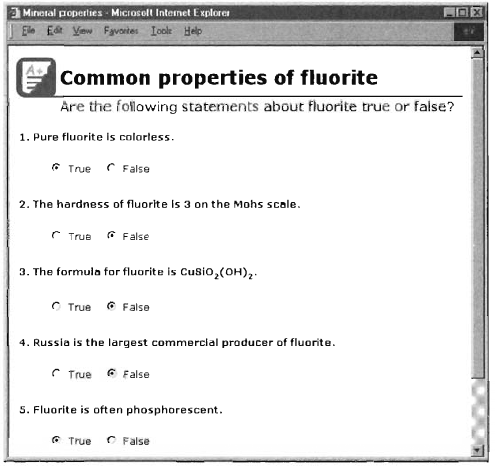7.3. SELECT THE RIGHT TYPE OF QUESTION
You can use a variety of test questions. This section introduces the most popular types. It is weighted heavily toward simple ones that do not require the latest technology, high-bandwidth connections, or lots of plug-ins. It also features ones that can be evaluated by the computer.
7.3.1.
7.3.1.1. True/False questions
True/false questions require learners to decide between two alternatives, typically saying whether a statement is true or false.

Here are examples of true/false questions from a course on identifying minerals.
7.3.1.2. When to use true/false questions
Use true-false choices to test learners' abilities to make definite judgments. True-false questions require learners to make a binary decision:
Is a statement right or wrong?
Will a procedure work or not?
Is a procedure safe or unsafe?
Does an example comply with standards?
Should you approve or reject a proposal?
Which of two alternatives should I pick?
Before using a true/false question, consider other types of questions as well. True/false questions are restricted to simple cases and may encourage guessing:
However, a well-designed true-false question that requires the same thought processes as the real world activity is more accurate and valuable than a three-dimensional, immersive simulation that invokes only the decision-making skills of the video-game parlor.
7.3.1.3. ...
Get Designing Web-Based Training: How to Teach Anyone Anything Anywhere Anytime now with the O’Reilly learning platform.
O’Reilly members experience books, live events, courses curated by job role, and more from O’Reilly and nearly 200 top publishers.

